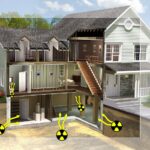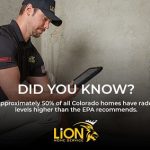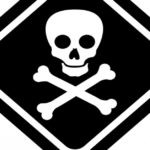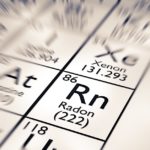There could be a dangerous killer lurking in your home, and you wouldn’t even know it.
According to estimates from the U.S. Environmental Protection Agency, radon causes as many as 21,000 lung cancer deaths annually, second only to smoking. So what exactly is radon, and why is it such a threat to your home and your health?
Caused by the breakdown of uranium in soil, radon is a colorless, odorless gas that can seep into homes and buildings through gaps in the foundation. When radon leaks into a basement, it can pool there and permeate through the rest of the house, where it then gets unknowingly ingested and inhaled by the occupants. Exposure to high concentrations of radon over time can result in serious health problems up to and including death.
Radon is much like oil or water — you know it’s there underneath the earth’s surface, but there’s no way to tell exactly where, how deep or how big the pockets are. Here in Northern Colorado, ground disturbances due to fracking and construction can stir it up, and newer homes with well-sealed basements may actually be more at risk than older homes with cracks that allow avenues for some of the gas to escape.
How do you know if your home has radon?
Radon exists in all 50 states, and almost every home has some degree of radon in it. The Colorado Department of Public Health and Environment has found that approximately 50% of all Colorado homes have radon levels higher than the EPA-recommended 4 picoCuries per liter (pCi/L). Although radon inspections are strongly recommended during home buying and selling transactions, they’re not required by law. Therefore, many people live in their homes for years without ever knowing what their radon levels are, or that they can change from year to year.
Since radon presents no obvious indications and related health issues may only appear after years of exposure, the only way to know how much is in your home is to measure it. There’s no standard guideline about how often radon levels should be checked, but it’s a good idea to take a measurement once a year.
What’s involved in radon testing?
Getting an accurate radon measurement is a fairly uncomplicated process that can be performed by a homeowner or a licensed professional. The simplest way to do it involves placing a test kit in the lowest level of the home to absorb air particles for 48 hours, then sending it to a lab to analyze the results. More sophisticated equipment can provide real-time results on the spot without lab input. Expect kit prices to run anywhere from $10 to $200.
It’s important to follow the provided instructions and place the kit in an area without drafts and away from vents, windows and doors in order to get the most accurate measurement. High heat and humidity can also throw off a radon measurement. If sections of your basement are cut off or isolated, you might want to test in several different areas.
My radon level’s too high. Now what?
While a high radon reading is a serious problem that must be addressed, the good news is it’s not hard to mitigate. If you find your home has a high concentration of radon, there are several ways you can reduce it down to an acceptable level.
Passive mitigation remedies allow radon from your basement to dissipate through a venting pipe installed under your slab or in a crawlspace. Active mitigation uses a fan to pull the interior air outside, a system that can cost between $800 and $1,500 depending on your needs. You can also install a radon monitoring device or detector to make sure the level in your home stays in a safe range.
If you need further help or advice, it never hurts to consult a certified radon mitigation specialist for assistance.









